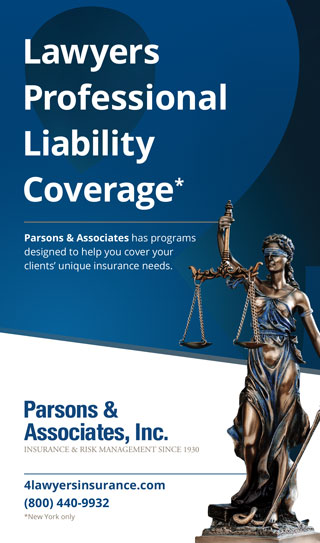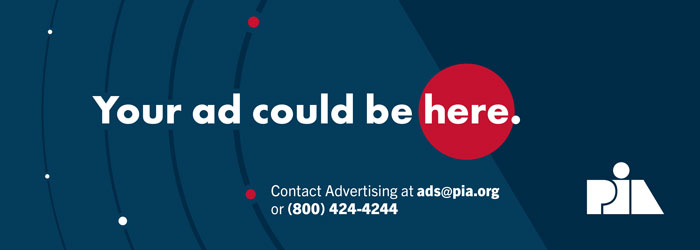Answer this one honestly: Does your agency actively collect and act on feedback from customers and employees? If the answer is no, you’re not alone.
Some independent agents gather enormous volumes of feedback, but they fail to follow through. Others shy away from asking for others’ opinions, concerned they might hear some painful or downright unfixable truths. However, ignoring feedback leaves clients and employees feeling unheard and it can quietly stall your agency’s growth.
When agency owners collect and use feedback consistently, member and employee satisfaction soar. However, there are a few red flags that can signal a broken feedback loop, and agents will need a practical plan to help get it right.
Avoid the data-gathering missteps
Many agents conduct customer and employee surveys and encourage clients to leave Google reviews. Unfortunately, they don’t always know how to process the onslaught of information correctly. Four common missteps include:
Overreacting to outliers. One negative Google Review shouldn’t cause chaos inside your agency. Instead of obsessing over taking it down, concentrate on gathering more positive reviews to balance the narrative.Customers who see 1,000 reviews and a 4.5-star average will understand most people prefer your agency, even if a few outliers do not.
Ignoring indirect feedback. When clients are ready to churn, they will give customer service representatives the unvarnished truth about their dissatisfaction. Capture that feedback and use it to drive improvement.
Addressing the symptoms, not the root causes. Are customers confused about their coverage? Dig deeper to learn why. If it’s because an agent didn’t explain the coverage in easy-to-understand terms, then targeted training can help solve the true problem.
Failing to synthesize feedback properly. Not all feedback is equally important. If commercial lines generate most of your revenue, prioritize feedback from those clients over feedback from personal-lines clients.
Create a strategic feedback plan
Developing a strategic approach to feedback starts by gathering it consistently. Agents should use multiple channels, including Google Reviews, customer and employee surveys, email replies, agency notes and call reviews. You also may choose to collect and calculate Net Promoter Score, which measures a customer’s likelihood of recommending your business to others.
Once you set up multiple feedback channels, you need a plan to gather and organize it all. Many agents leverage customer relationship management tools to centralize data collection and identify top trends.
Then, identify which recurring themes will impact client and employee satisfaction the most. Consider creating a two-by-two matrix, either using visualization tools within your CRM or even making your own by hand. One axis should rank frequency from low to high, and the other should rank impact. Input your key themes into the grid and focus on improving those that rank high in both areas.
The last step is creating a Feedback-to-Action Plan, detailing the steps you’ll take to address each core theme. Your plan should include metrics tied to agency goals, such as improving member retention, enhancing the claims experience or growing revenue. Share the plan with staff and set a time frame for achievement, such as implementing improvements by the end of the fourth quarter.
Cultivate employee buy-in
Even with a strong Feedback-to-Action Plan, agents can struggle with follow-through. One of the biggest roadblocks is a lack of staff buy-in. Seven ways to overcome this challenge include:
No. 1: Avoid process overload. Most agency owners are visionaries, which means they sometimes ask staff to tackle too many tactics too quickly. A better idea is to focus on one-to-three initiatives per quarter so staffers can focus their efforts.
No. 2: Frame the opportunities properly. Fixing the root cause of some negative feedback, such as complaints about customer billing, could require your staff to perform more work in the short term. When this happens, let your team know these are client-driven changes—not management-driven mandates—so they understand the context.
No. 3: Involve staff in developing solutions. If you’re updating the office layout to improve efficiency, for example, ask staff to pick out the style of desks or get their input on the arrangement of cubicles so they’re invested in the process.
No. 4: Break complicated fixes into phases. Let’s say you’ve chosen to implement a CRM or other software to improve member satisfaction. Make implementation easier on your staff by focusing on one use case, such as gathering and segmenting data on existing clients, before using it for prospecting and other applications.
No. 5: Bring in outside experts. If new technology is part of your plan, make sure staffers have access to resources they’ll need. Some agency alliances offer training and field support teams, staffed by experts in technology implementation. Alliances also may offer discounts on popular solutions so you can save money, too.
No. 6: Keep the feedback loops open. Once a new process is implemented, the work isn’t done. Agency owners must keep checking in with staff, gathering input, and refining the process until it works for everyone inside and outside your agency.
No. 7: Be honest about what you can’t fix. Employee complaints may be outside your control. If that is the case, explain the reason why. Your staff will appreciate the transparency even if the problem can’t be solved.
Communicate confidently with clients
From a client-facing perspective, communication is the root cause of most complaints. Not every client appreciates digital-first communication, even in today’s digital-first world. And, while it’s tempting to deliver immediate responses to customer inquiries, sometimes it’s better to take a pause before hitting send. Five best practices for more effective client communication include:
Clarify expectations up front. When writing quotes, inform new clients you will need time to research their assets, shop policies and find them the best fit, and frame it with a time-to-response expectation, such as, “I’ll get back to you in two business days.” For existing clients, commit to a uniform response time, such as returning all emails within 24 hours, then add that language to your email footer and voicemail messages so customers know exactly what to expect.
Understand clients’ communication preferences. Ask clients for their preferred communication channel—phone, email or mobile. Then develop options that let clients choose the way they conduct business, such as offering a user-friendly, self-service portal for those who prefer digital interactions, while still providing phone calls with agents and account managers for those who prefer a human touch.
Strive for consistency. Give clients the same experience across all channels. Consider creating a list of never phrases for agents, such as, “I don’t know the answer,” then script alternatives such as, “Let me find the answer for you,” or “I’m sure one of my teammates can help.”
Conduct annual account reviews. This crucial touch point keeps clients in the loop, but sometimes it doesn’t happen. When annual reviews are skipped, clients may find out they are underinsured years later, after filing a claim, which will trigger hurt feelings, negative reviews and multiple other unpleasantries.
Help clients understand the why. Great agents position themselves as trusted advisers. Doing so means explaining all potential outcomes to clients. For example, if price-sensitive clients ask about their rising deductible, inform them of the potential benefits and risks—lower premiums but lesser coverage—so they can make the most informed decision. Collecting and responding to feedback is an ongoing process for agencies. That’s why it’s important to find a partner who can hold you accountable. When you network with other agency owners, you can benchmark your agency’s Feedback-to-Action Plans, brainstorm fresh ideas and receive continuous support. Seek to stay connected with employees, clients and peers, and position your agency for the next phase of its growth.

Holly Herron
Holly Herron, MBA, is the regional president for the Atlantic/Southeast region of SIAA. Previously, she held positions as chief operating officer and chief executive officer at Assure Alliance Inc., a SIAA master agency. Additionally, Holly was chief financial officer at Marsh McClennan Agency and Rosenfeld-Einstein & Associates Insurance Agency Inc. She earned her MBA from the University of Phoenix and her BS/BA in accounting from the University of Arkansas.





